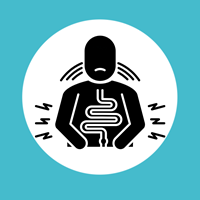Salmonella
Find Salmonella infection resources, how to reduce your risk, and what to do when sick.
Short URL: kingcounty.gov/salmonella
About Salmonella
Salmonellosis is a bacterial infection caused by Salmonella that is often spread through the fecal-oral route, through contaminated food and water, or through contact with animals and their environments. Symptoms of salmonellosis include nausea, vomiting, diarrhea, headache, fever, chills, and abdominal cramping. Illness typically lasts several days, and people can spread infection to others even after symptoms resolve.
Salmonella information sheet (203 KB)
This fact sheet goes over basic information on Salmonella, including how it spreads, symptoms, and what to do if you’re sick.
Available in the following languages:
አማርኛ - Amharic (185 KB) | العربية - Arabic (241 KB) | 简体字 - Chinese, Simplified (217 KB) | 繁體字 - Chinese, Traditional (225 KB) | English (203 KB) | 한국어 - Korean (200 KB) | Русский - Russian (246 KB) | Af Soomaali - Somali (146 KB) | Español - Spanish (156 KB) | Wikang Tagalog - Filipino/Tagalog (132 KB) | Українська - Ukrainian (244 KB) | Tiếng Việt - Vietnamese (228 KB)
To prevent Salmonella infection
- Wash hands with soap and water after going to the bathroom, changing diapers, touching animals, and before eating or preparing food.
- Cook all meats thoroughly, especially poultry.
- Wash cutting boards and counters used for meat or poultry preparation immediately after use to avoid cross contaminating other foods.
Resources for health care professionals
- Salmonellosis is a reportable condition in King County: See disease reporting requirements.
- View reports of Selected Salmonella Outbreak Investigations, CDC

 Translate
Translate
